Mountain Biking in North Korea
Few mountain-bike destinations seem as ambitious as North Korea, but the country is home to myriad steep mountains and hiking trails that are perfect for exploring
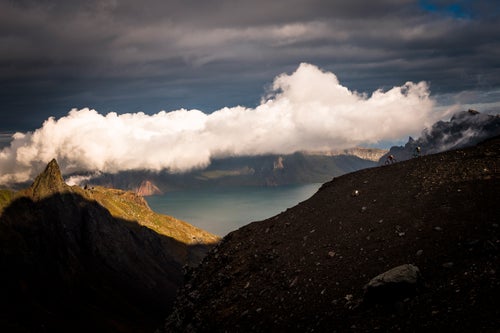
In September 2018, I joined mountain bikers Harald Philipp, Max Schumann, and Tom Bodkin for a 12-day trip in North Korea. We were driven by curiosity, not only to see how the trail riding would be but also whether the novelty of arriving with mountain bikes could break through expected cultural barriers in North Korea as it has in so many other places we have visited.
Photo: Schumann and Philipp ride from the summit of the 9,002-foot dormant volcano of Mount Paektu. Located in the far northeast corner of the country, Paektu is the highest point on the entire Korean peninsula and is considered sacred by the Korean people.
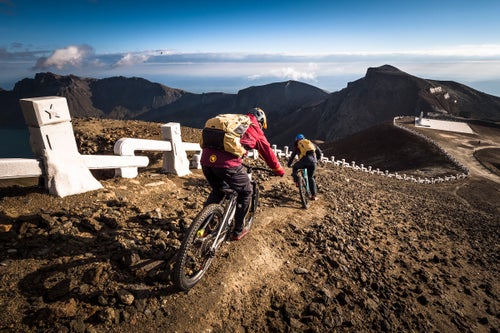
On a seldom-used trail, Philipp and Schumann descend alongside Paektu’s crater rim toward a gleaming white-granite monument. North Korea’s leaders have historically made speeches to the nation from Paektu, underpinning the mountain’s importance in the country’s politics and propaganda. Two weeks after riding Paektu, Kim Jong-Un and South Korean president Moon Jae-in would raise clasped hands at this monument.
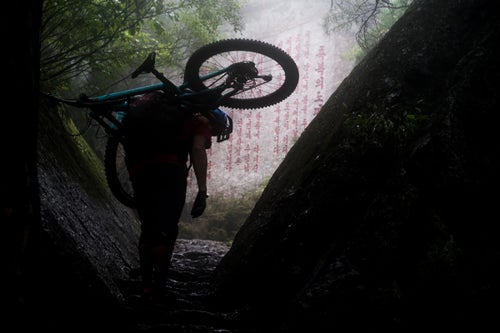
A wall of slogans looms out of the mist as Schumann carries his bike up a steep trail on Mount Myohyang. While we expected to be greeted by political propaganda on Pyongyang’s city streets, seeing it hand chiseled in rock faces came as a surprise as we explored the forest trails of Mount Myohyang.
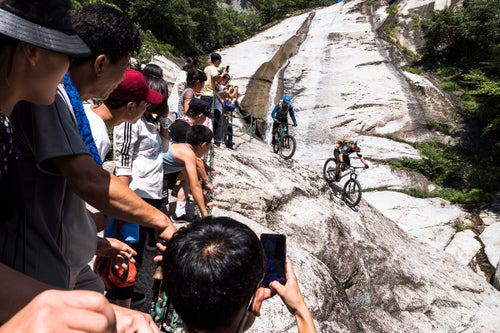
With a line of North Korean day hikers watching, Schumann and Philipp descend a bedrock outcrop on Mount Myohyang. The novelty of seeing mountain bikers sharing their trails drove most North Korean hikers we encountered to reach for their smartphones to snap photos or video of us. They could only share their shots on North Korea’s own intranet, since the country’s citizens have no connection to the World Wide Web.
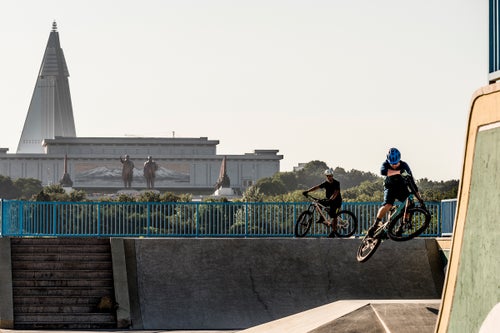
The two 66-foot statues of former leaders Kim Il Sung and Kim Jong Il look on from across the city as Schumann rides Pyongyang’s skate park. The park wasn’t part of our original tour itinerary, but after spotting it from the tour bus as we drove through Pyongyang, we asked to ride it, and our guides were happy to make it happen.
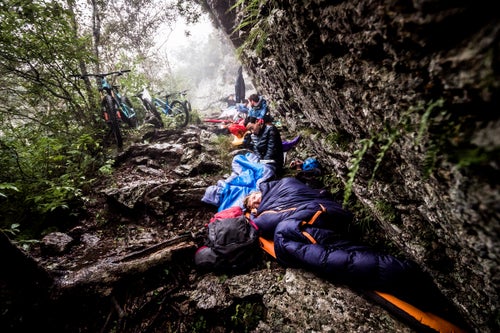
Following a 5,300-foot ascent the day before, we woke to a cold, rainy morning after an overnight bivouac under a rock slab on Mount Myohyang. Our North Korean guides were willing to be flexible as they catered to our adventure aspirations. It was the first-ever camping experience for one of our guides, Om Jin Song.
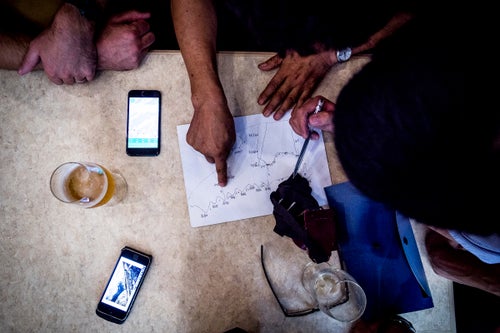
Poring over a hand-scrawled map, drawn and annotated in Korean by local guide Kim In-guk, we set about planning our ascent of Mount Myohyang. As a Unesco Biosphere Reserve, Myohyang is a popular place for North Korean hikers and has many trails. To find our way around these trails, our Pyongyang-based tour guides partnered up with 70-year-old Kim.
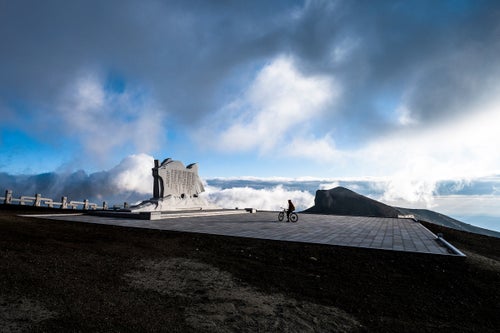
Amid the swirling clouds of a clearing storm, Philipp pauses at the Paektu monument. A 3:45 A.M. start rewarded us with summit success during our short, 48-hour stopover in the north of the country. Few North Koreans get the opportunity to visit Paektu, renowned for sudden storms and winter temperatures that drop to minus 50 degrees.

Tourism is a fledgling but growing industry in North Korea, with much of it centered on Pyongyang. During our 12-day trip, we stayed in a four-star skyscraper in Pyongyang with oddly fancy telephones, a tired and rustic hotel in Samjiyong, and a family homestay at Chilbo, on the east coast.
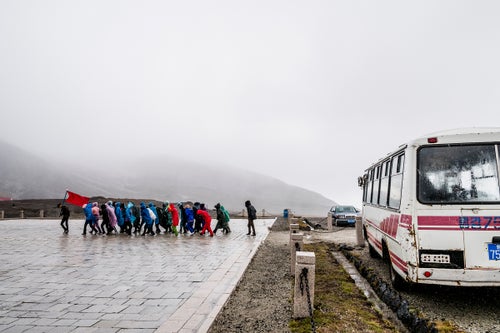
Led by a red flag, a team of workers enjoying their one rest day per week begin a hike up Mount Paektu. While rain and strong winds dissuaded us from trying to ride Paektu on our first attempt, North Koreans were not so easily deterred. We watched their progress from the chilly but dry interior of our bus.